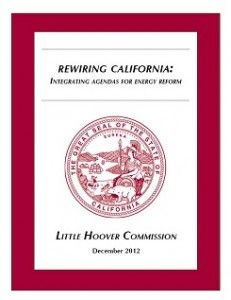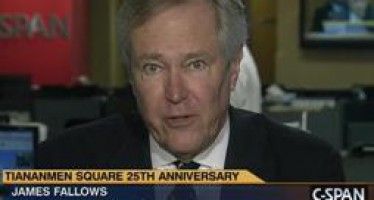New bill would short-circuit Hoover call for green power ‘timeout’
By Wayne Lusvardi
State Assemblyman V. Manuel Perez, D-Coachella, has proposed an ambitious new bill that would increase the mandate for green power in California from 33 percent to 51 percent by the end of 2030. This would bypass a 2012 report by The Little Hoover Commission calling for a “timeout” on green energy mandates.
Assemblyman Perez introduced Assembly Bill 177 back on Jan. 24, 2013, with the hope of its adoption by 2015. But the recent decision by Southern California Edison to decommission its San Onofre Nuclear Power Plant has renewed interest in Perez’s bill by the green power industry.
Perez’s bill aims to establish Imperial County as a major location for green power plants to meet this goal. The bill would also establish a long-term goal of reducing greenhouse gas levels to 80 percent below 1990 levels by 2050. Currently, AB 32, the Global Warming Solutions Act of 2006, mandates that 1990 levels of greenhouse gases must be reached by 2020.
The mothballing of the San Onofre Nuclear Power Plant is going to set back that goal because relatively more polluting natural gas power plants will have to be built to replace San Onofre.
Additionally, AB 177 would alter what is called the state’s energy “load order policy,” which decides the preference order for which type of energy production is most desirable.
Green power would be first preference
Currently, here is the load order for meeting growing energy needs:
1. Energy efficiency and demand response, such as home insulation and “smart metering.”
2. Renewable energy.
3. Energy generation from clean fossil fuels (e.g., natural gas power plants).
Perez’s bill would move renewable from the second position to the first position. It would give first priority to solar, wind and geothermal power over home insulation, efficient appliances or smart meters.
The California Wind Energy Association is concerned, however, that Perez’s bill calls for cost effective “procurement” of energy that would put less preference on wind energy. The geothermal energy industry has also registered concerns about the bill.
Perez is selling his bill as a way to fund the restoration of the dying Salton Sea in his assembly district.
Ask Bob Foster
The Little Hoover Commission report is concerned about such a sudden shift in energy policy. It takes five to seven years or more to permit and construct a new generating plant. New transmission lines take 10 years.
Bob Foster has called for a “timeout” on new energy mandates. A Democrat and former Southern California Edison president, Foster is mayor of Long Beach and a member of the board of governors of the California Independent System Operator, which manages state electricity. “Let’s work on what we have and understand the consequences, get to a reasonable level and not add any new requirements right now,” he said, according to the Little Hoover report.
Part of the problem is that reliance on such a high percentage of green power has not been pilot tested anywhere. Rapid development of energy plants is what caused the largest municipal bond default in U.S. history. The Washington Public Power Supply System (WPPSS or “Whoops”) built five nuclear power plants in the 1970s and 1980s, relying on bullish growth forecasts. All five of the plants were canceled in various stages of development.
The current mix of energy sources for California is:
| Source | Percentage |
| NON-RENEWABLE POWER | |
| Natural Gas | 36.5% |
| Nuclear | 15.7% |
| Large Hydropower | 13.4% |
| Unspecified Imported Power | 11.5% |
| Coal Power | 8.4% |
| Total | 85.5% |
| RENEWABLE POWER | |
| Solar, wind, geothermal power, etc. | 14.5% |
| Source: Little Hoover Commission | |
Perez’s vision of what California’s power mix should look like by 2030 is:
| Source | Percentage |
| Renewables | 51% |
| Natural gas, nuclear, hydropower, imported power and coal power | 49% |
Currently, non-renewable power makes up 85.5 percent of California’s power. Non-renewable power would have to drop 36.5 percentage points in the short time span of 17 years to hit its 49 percent target. That target then also would achieve the 51 percent green power mandate.
That means over the next 17 years California would have to build about 23 new large 500-megawatt green power plants — and phase out that many conventional power plants of the same size.
A megawatt of electricity serves about 1,000 homes. So Perez’s bill would be equivalent to replacing conventional power (nuclear, natural gas, etc.) for 11.5 million homes with green power. This also could be done with rooftop solar panels, but that wouldn’t provide jobs for the green power industry. Perez’s bill could virtually put investor-owned utilities (Edison, PG&E and SDG&E) out of business.
What about stranded costs…
One important aspect not addressed in Perez’s bill is who would pay for what is called “stranded assets” of mothballing 36.5 percent of the existing power in the state? Stranded costs are defined as those costs that cannot be recovered by regulated firms during the transition to other newer technologies or energy mandates. In other words, Perez’s bill lacks specifics of who would pay off the mega-billions of dollars of bonds on phased out power plants.
Several U.S. Supreme Court decisions, such as Lucas vs. South Carolina Coastal Council in 1992, mandate that government regulation that significantly degrades the value of a property is a “taking” that must be compensated. So the stranded costs from AB 177 could slam California taxpayers for untold billions of dollars.
…and blackouts?
Another big concern of the Hoover Commission is the prospect of blackouts due to the untested reliability of a statewide power grid that is dependent on what is called “energy intermittency”: “sunrise surges, sunset shutoff, and wait for the wind.”
Solar panels don’t generate energy at night. And wind power generates nothing when the weather is calm. So a calm night could produce sharp drops in power generation that could turn off the lights.
California has a bad history of passing faulty energy legislation. The 1996 bill AB 1890, by then-Assemblyman Steve Peace, a Democrat, was supposed to “deregulate” the state electricity system. It turned out there was no “deregulation,” but just a different and worse form of regulation that helped spark the California Electricity Crisis of 2000-01.
If AB 177 is adopted, on the way to 17 years from now California would learn whether the legislation was ahead of its time or another AB 1890.
Related Articles
Fallows cites CWD critique of his bullet-train stand
The Atlantic’s James Fallows, to his credit, followed up on his post last week touting the California bullet train project
Bullet train plan counting on new federal funding
The draft business report released last week by the California High-Speed Rail Authority presumes that $2.9 billion more in additional
The California train to nowhere
Sept. 18, 2012 By B. Wayne Hughes Jr. This past July, the California Legislature approved starting construction on the first





